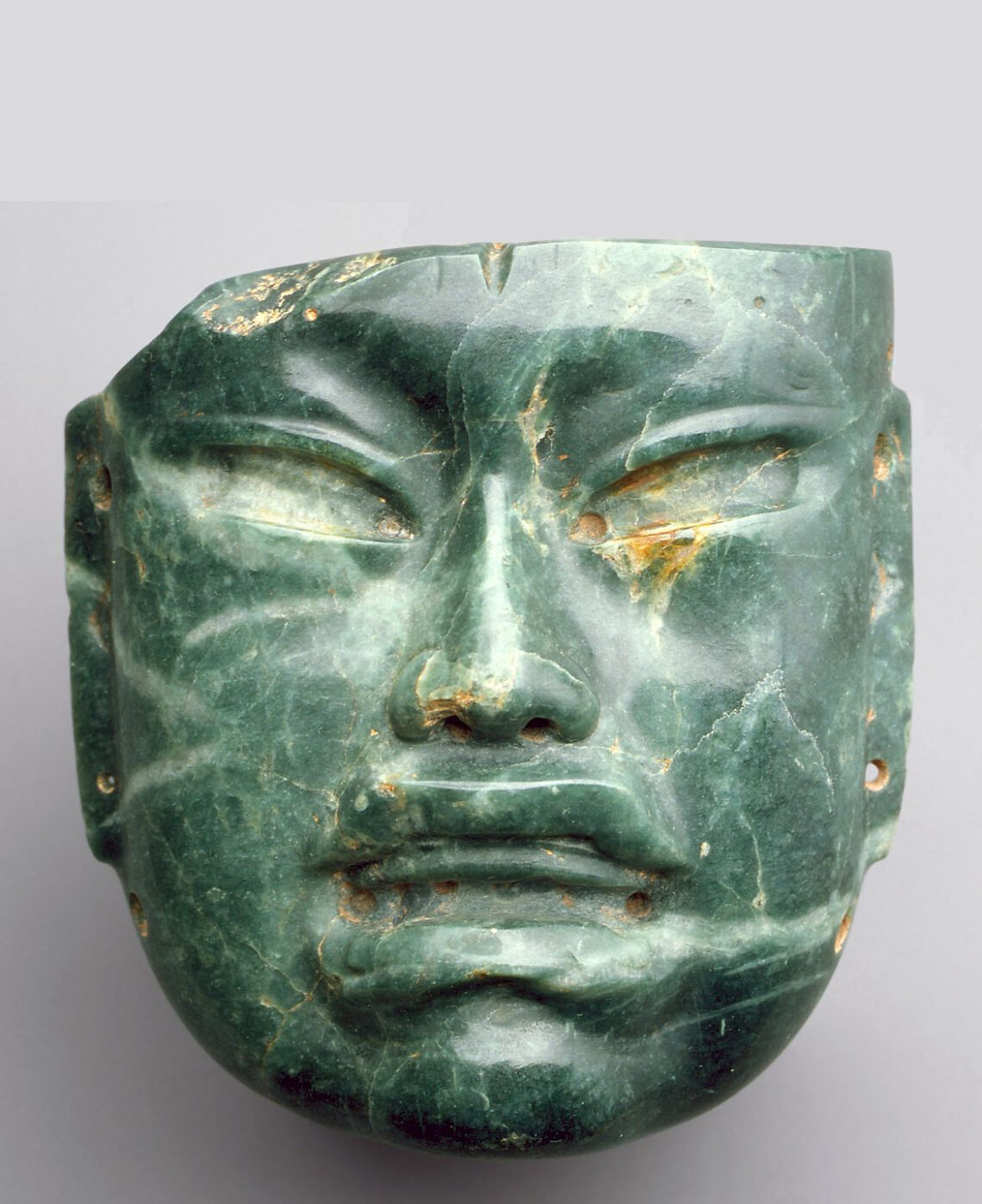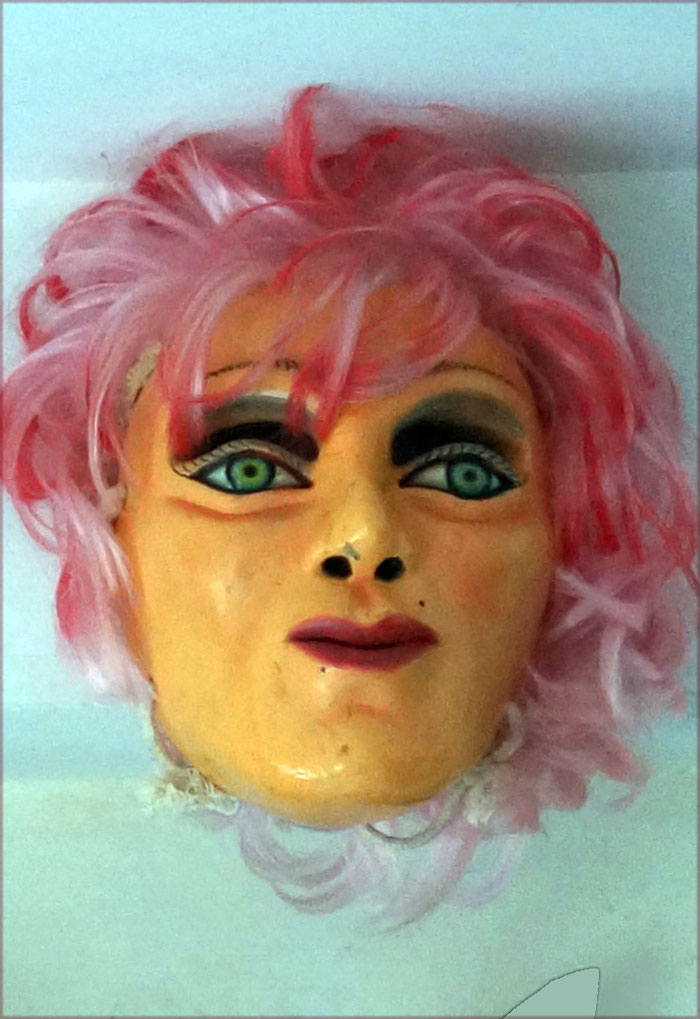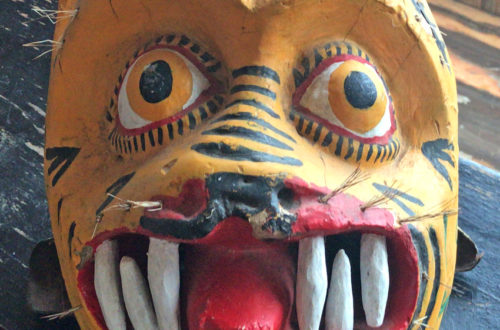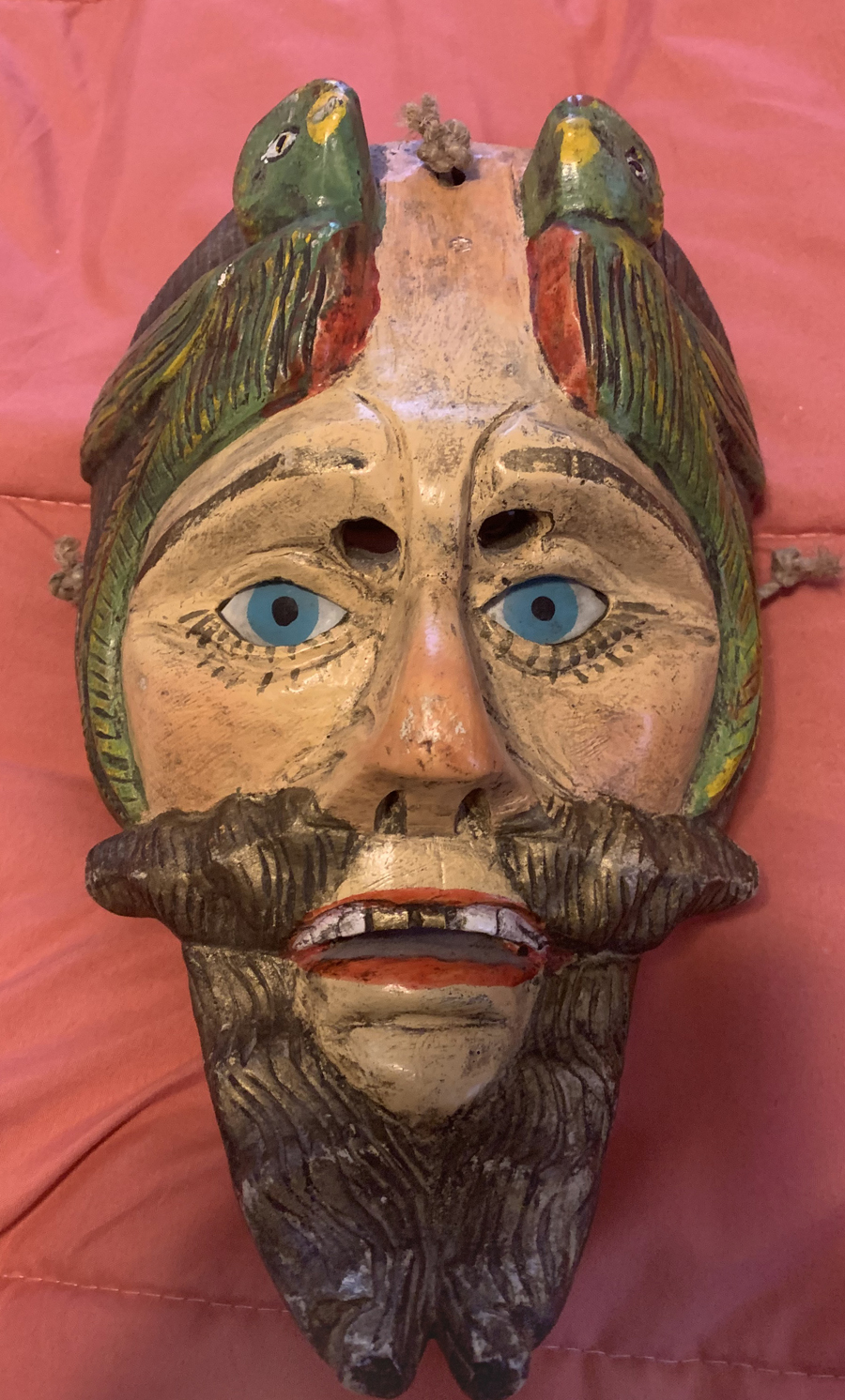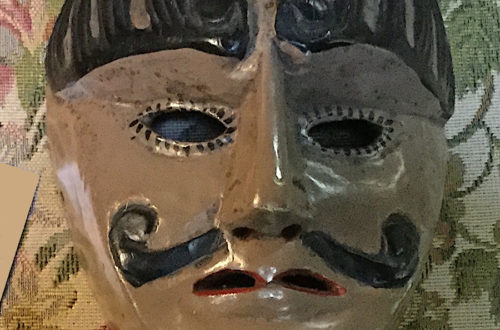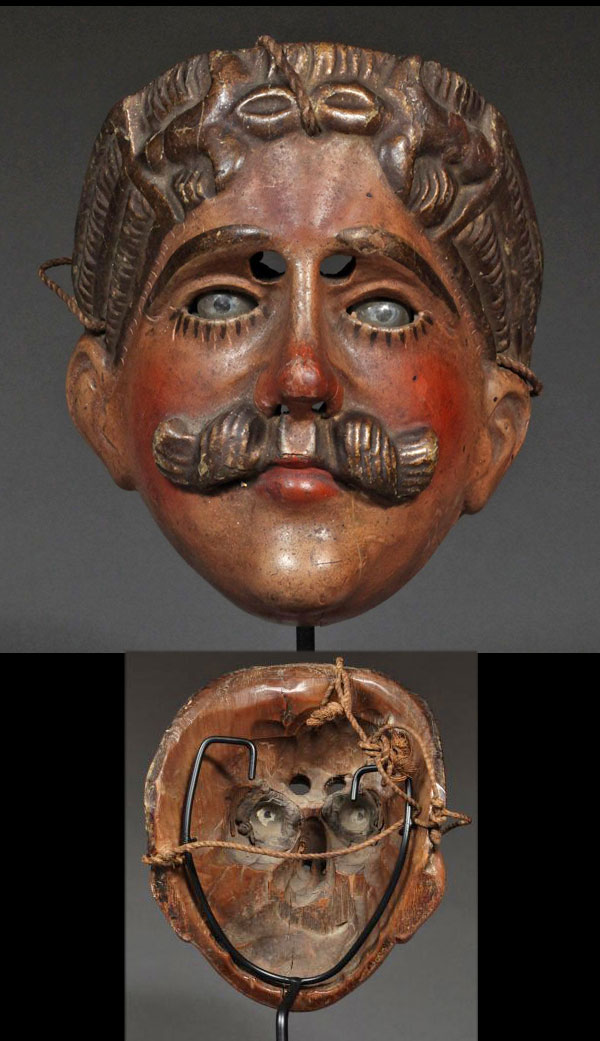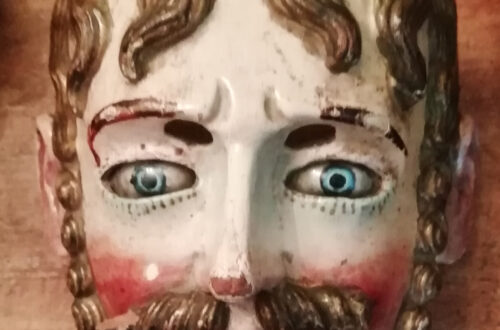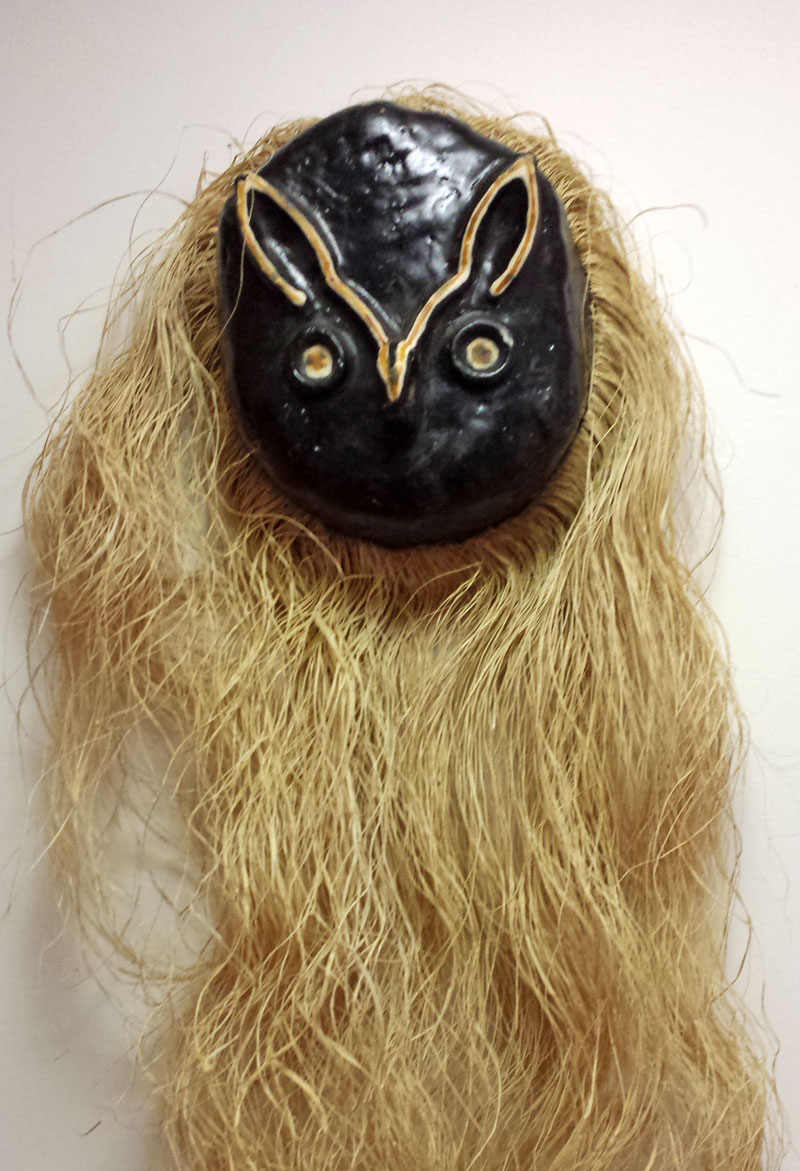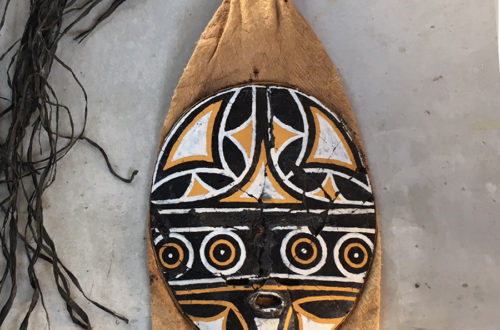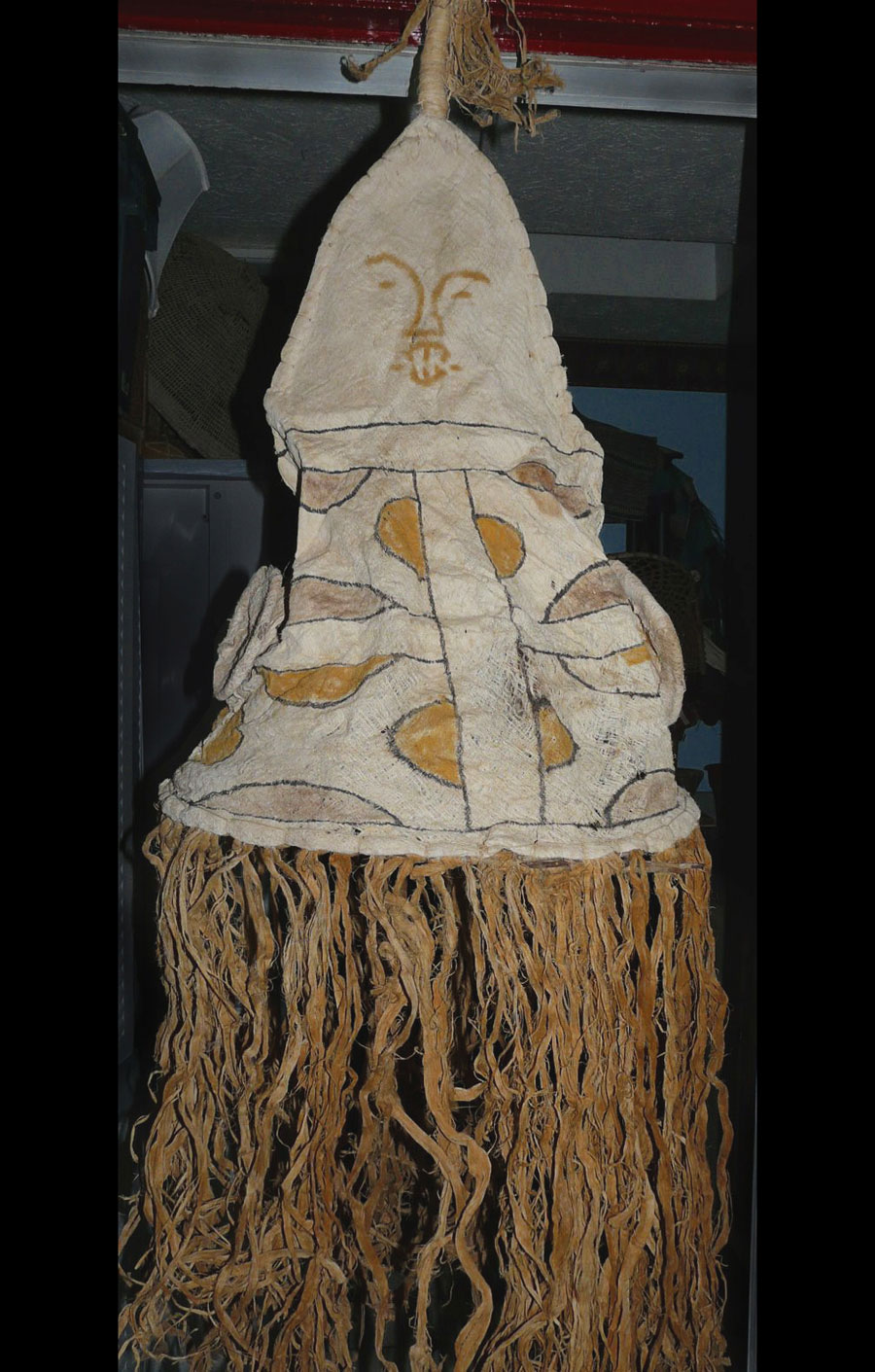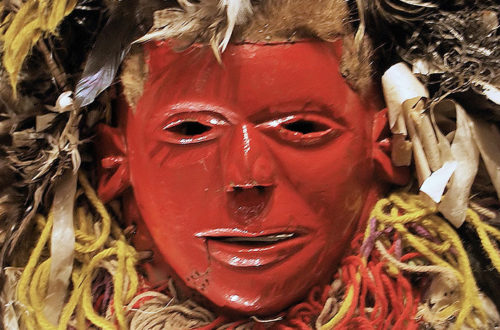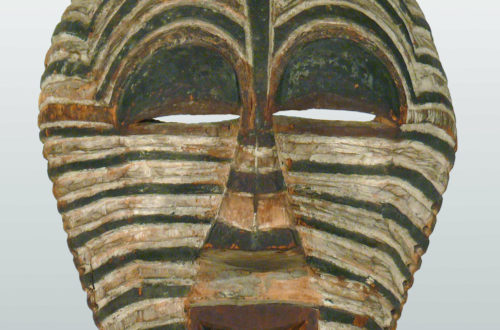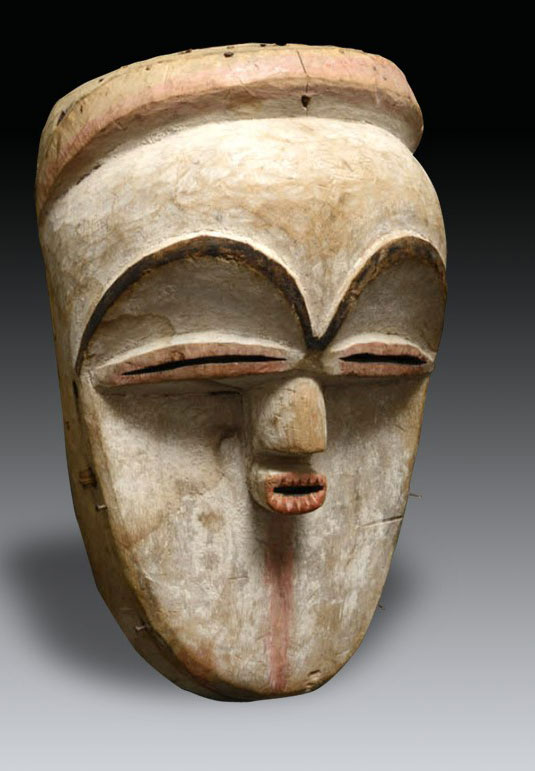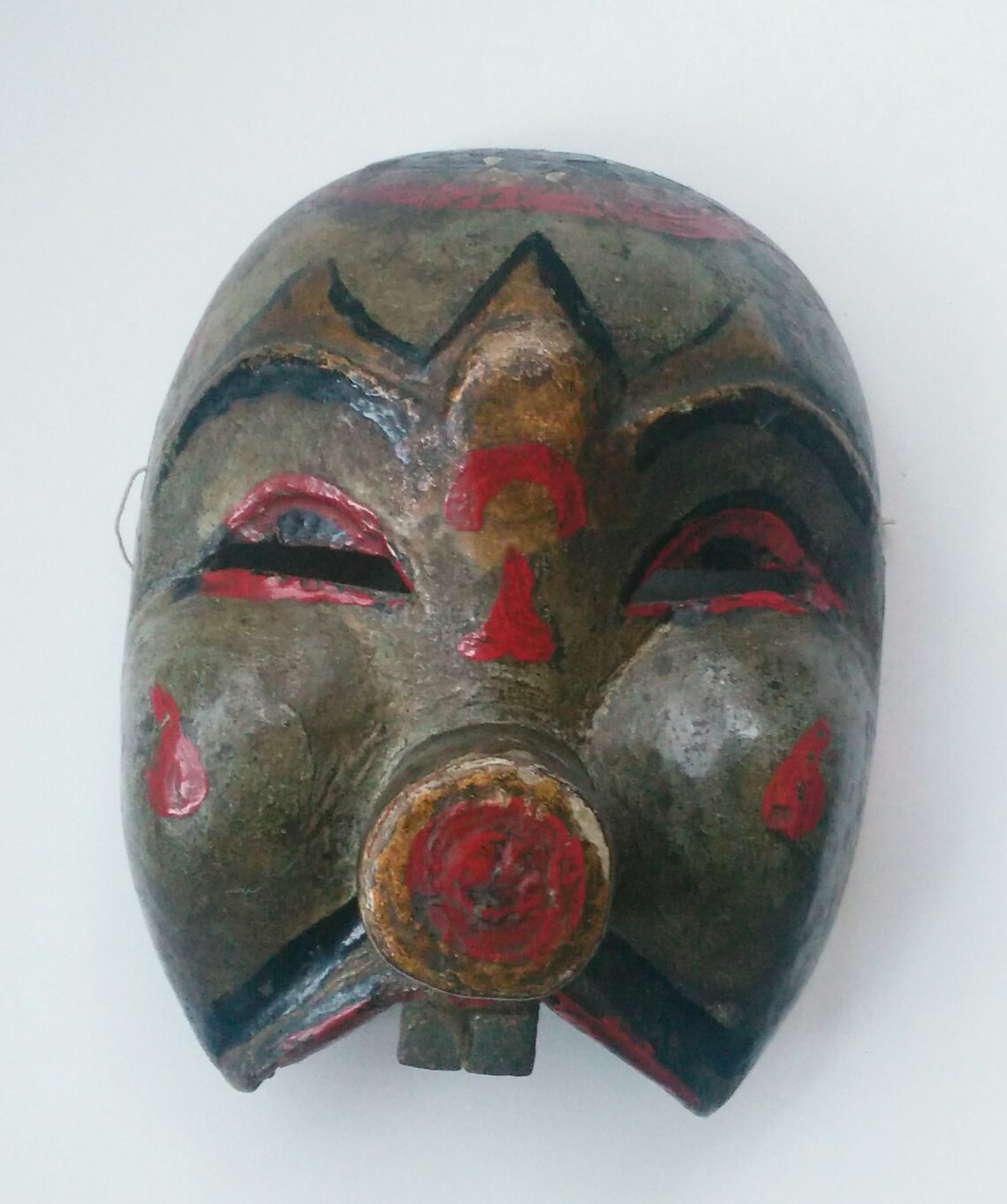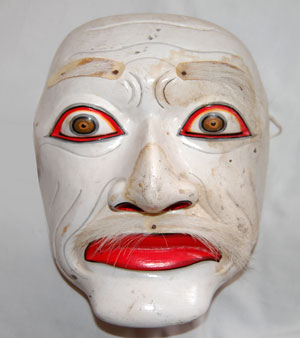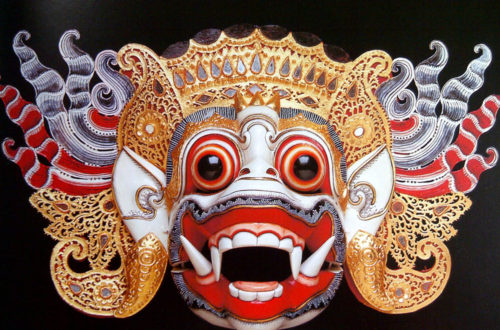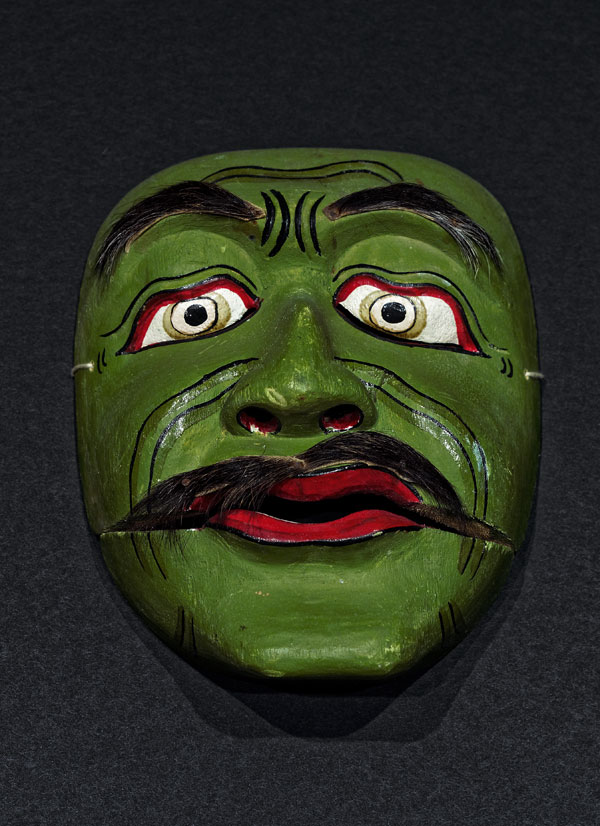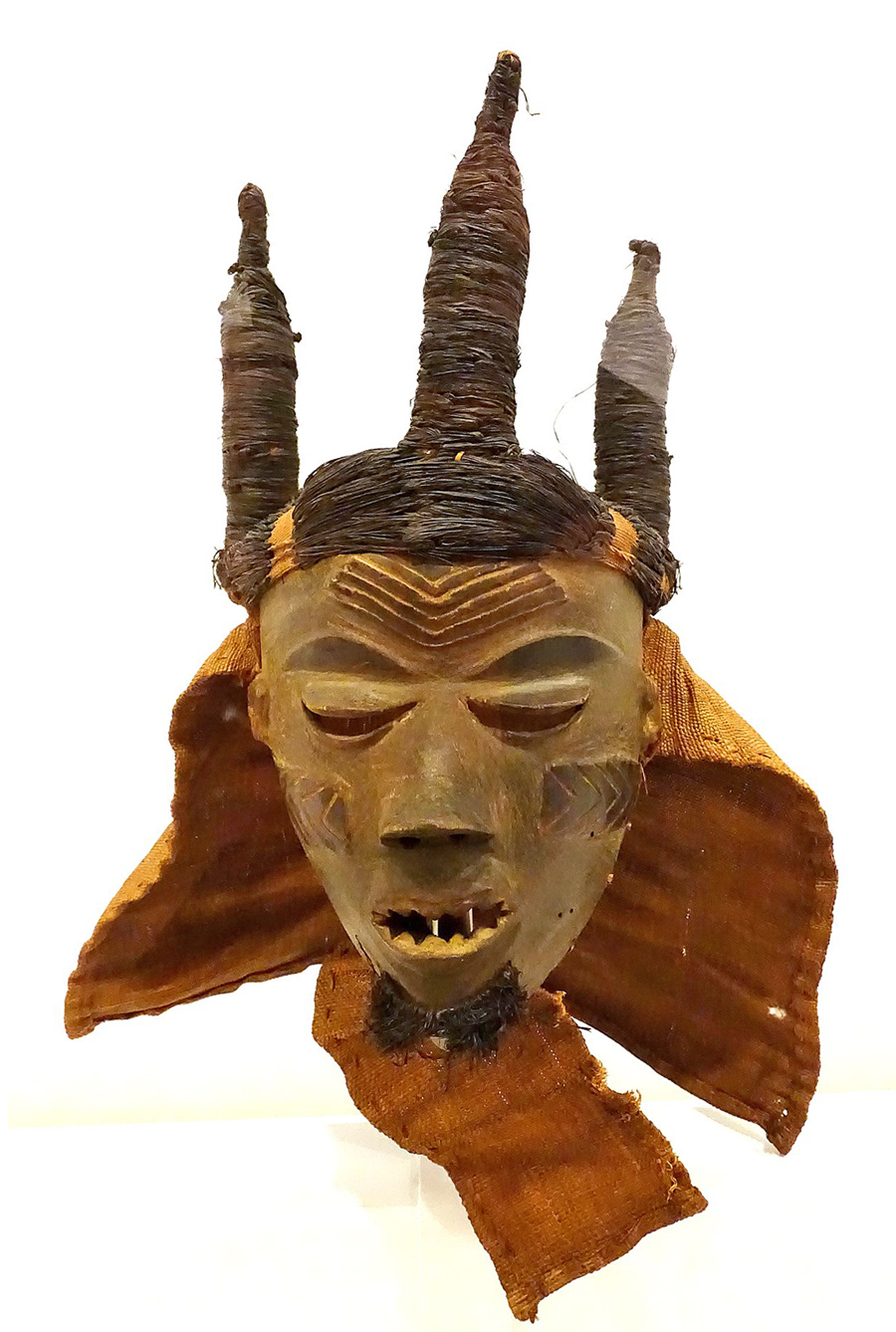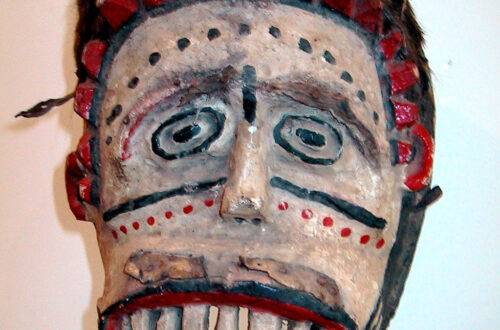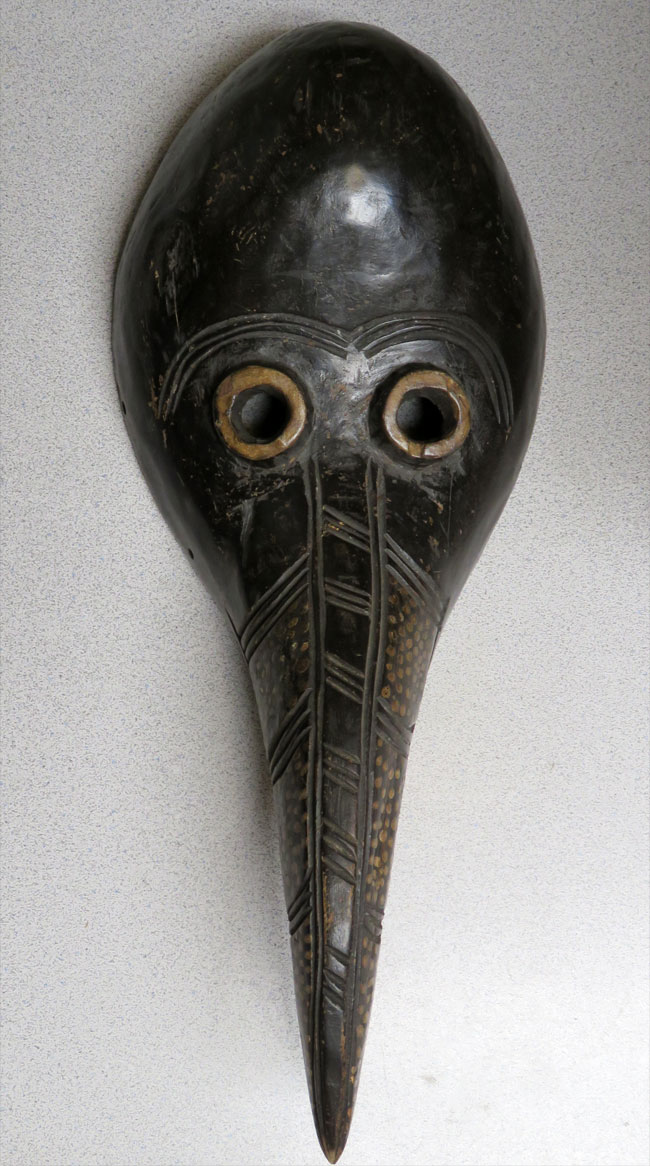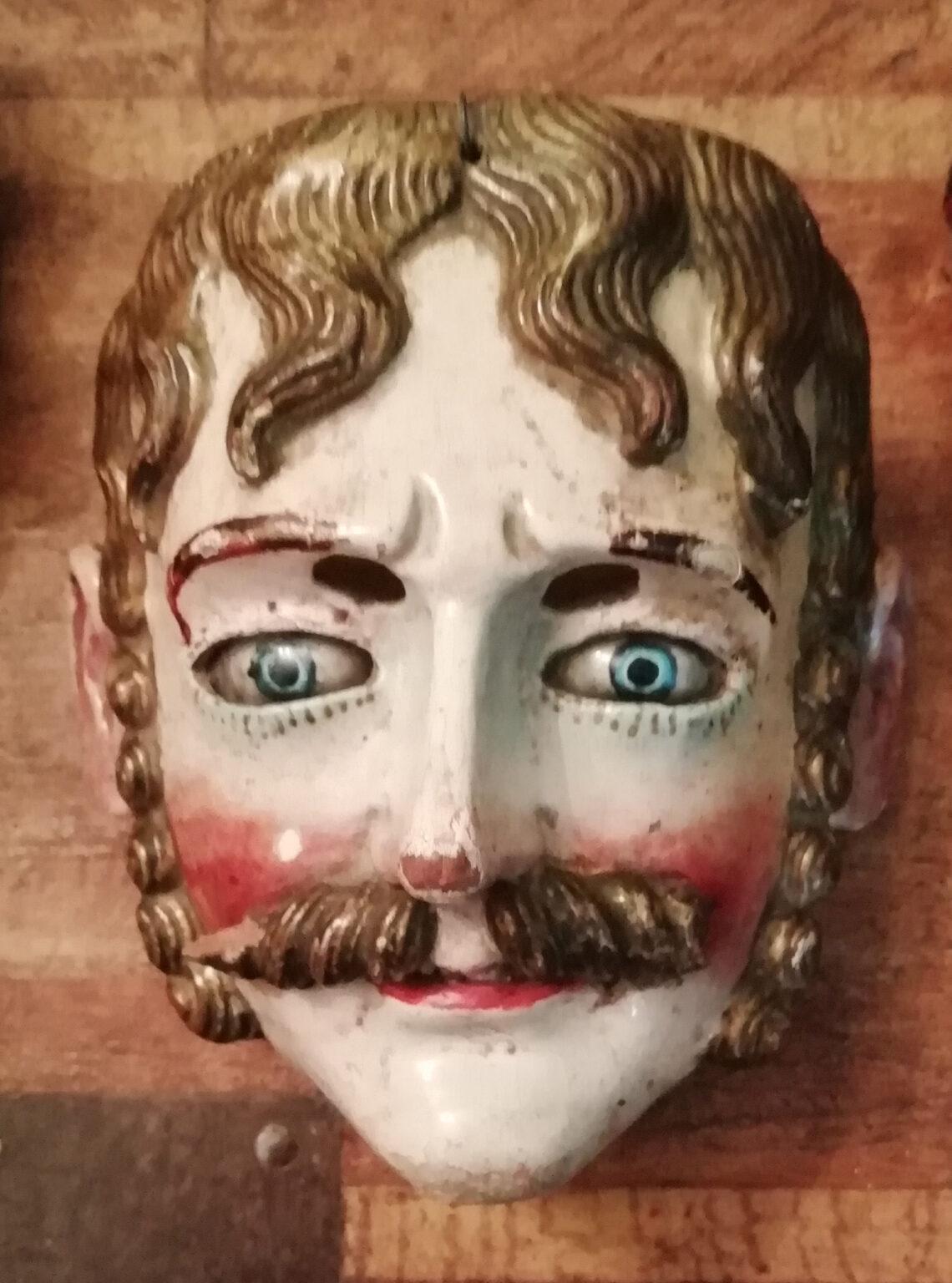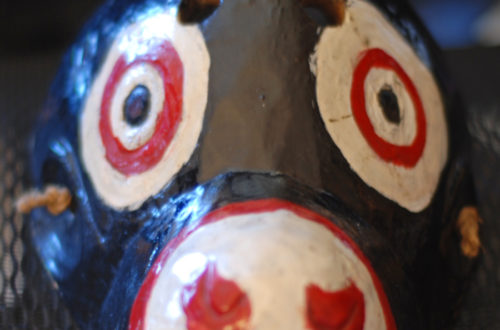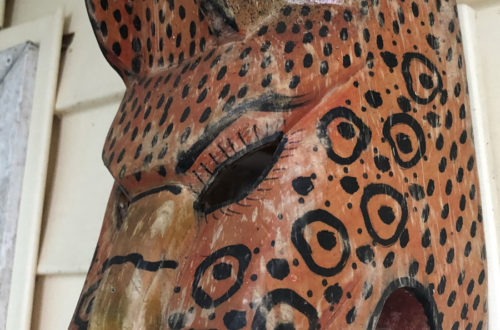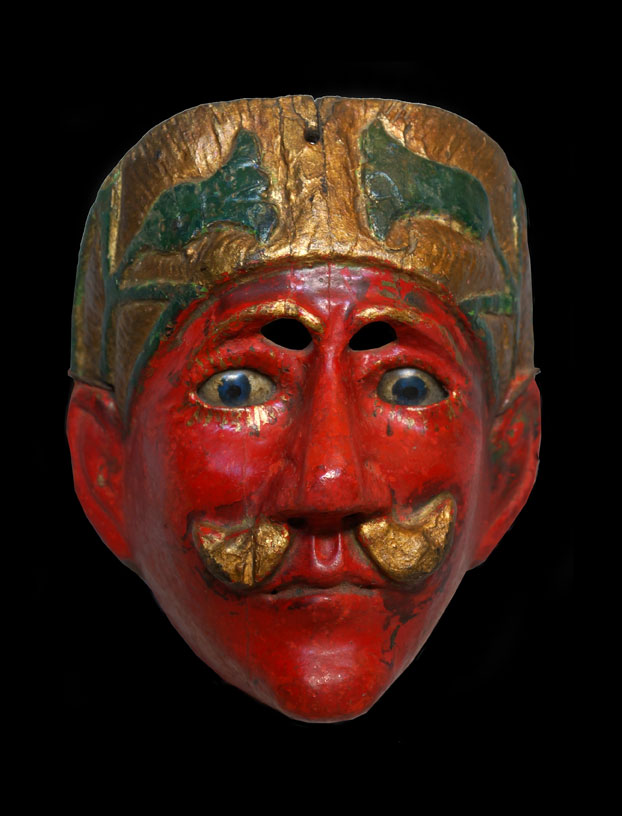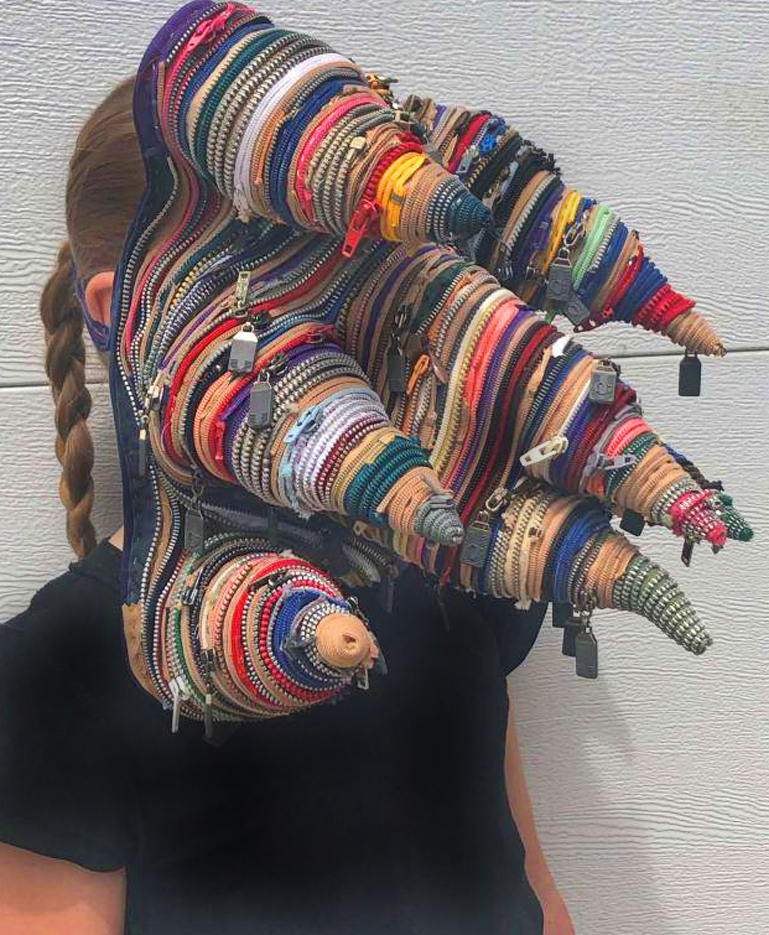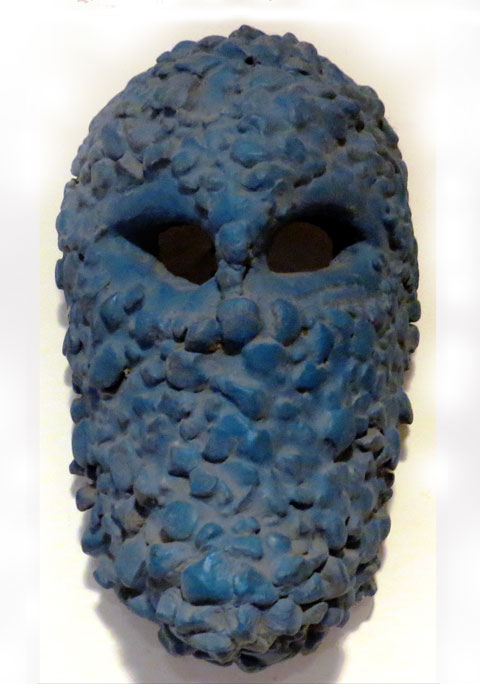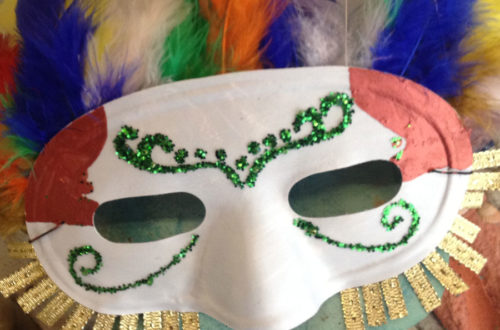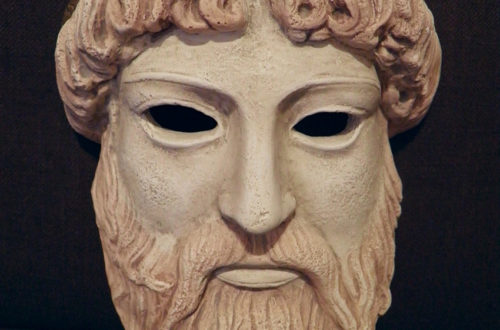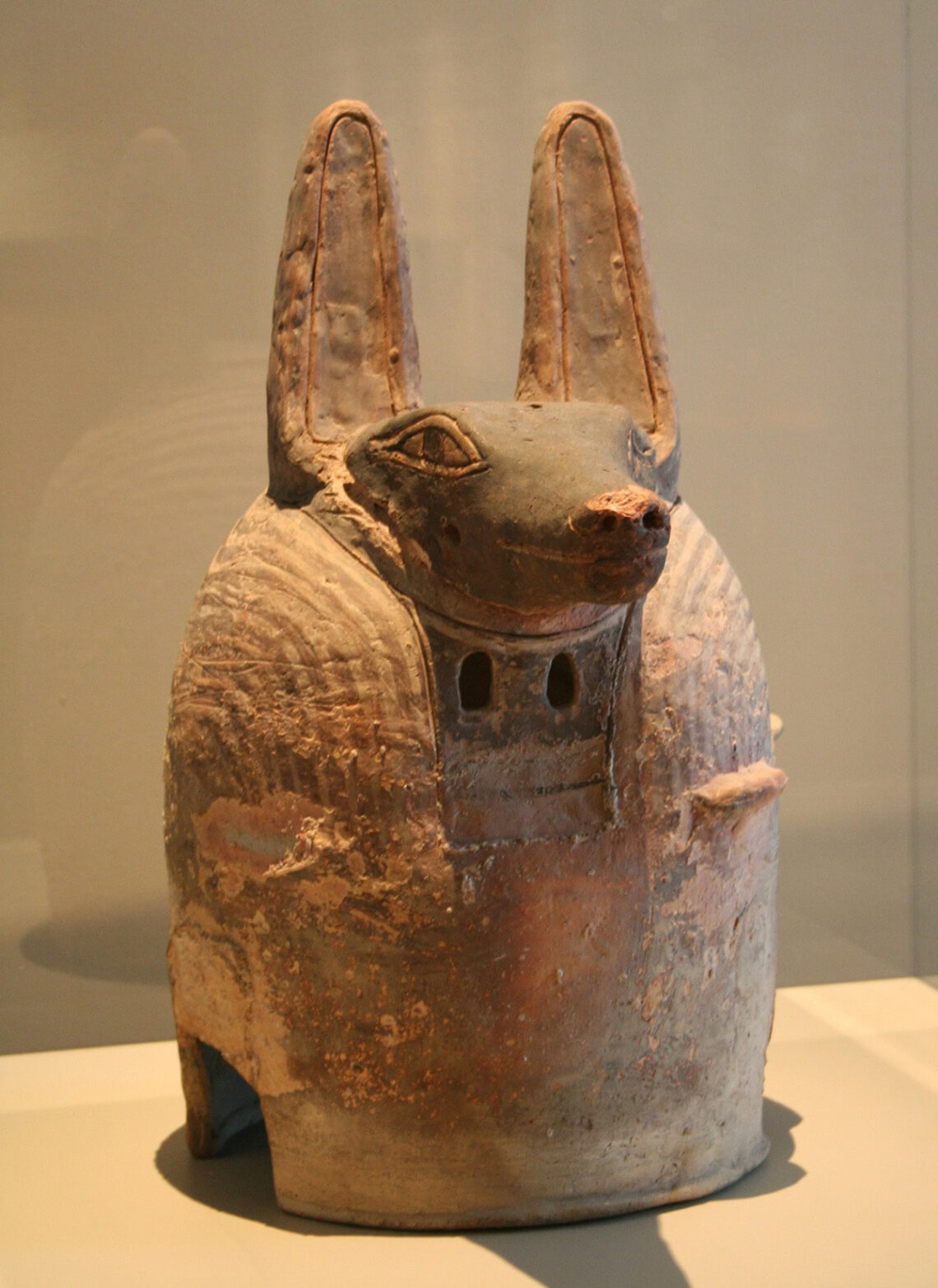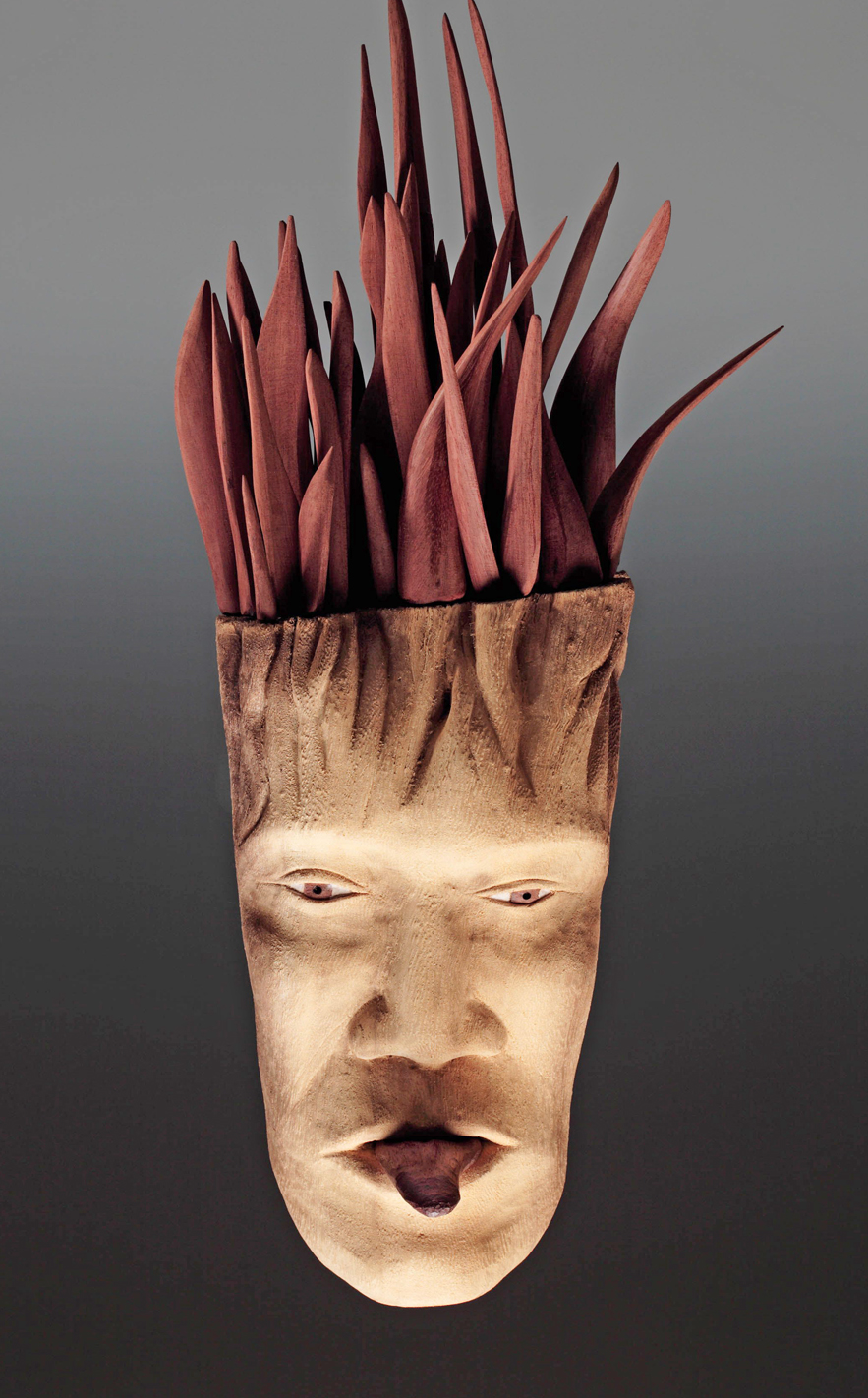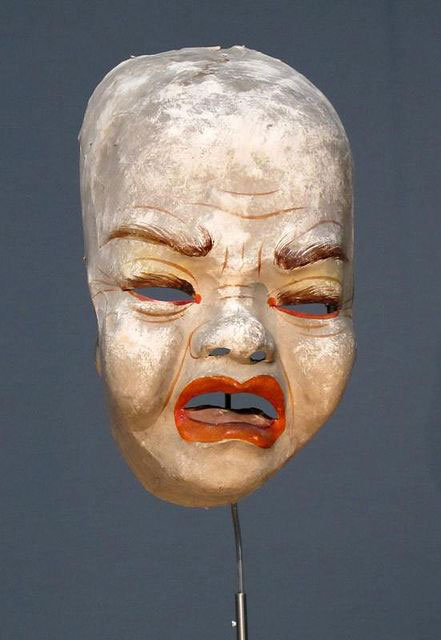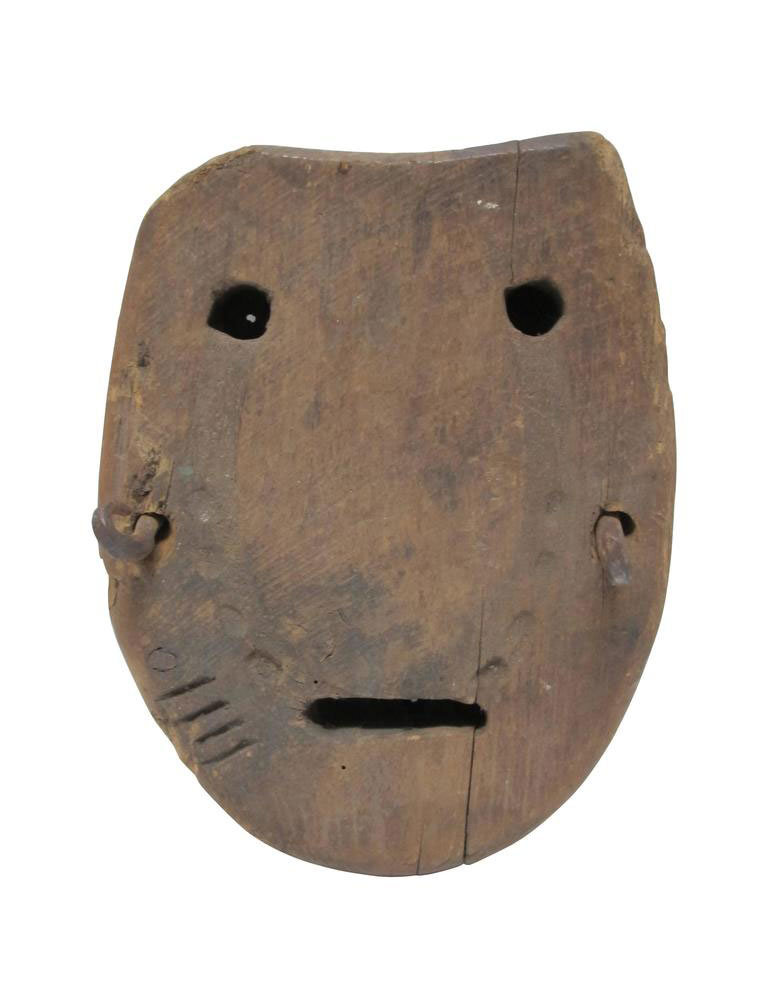The Olmec, whose heartland was located in present-day Mexico from 1200-400 B.C., excelled in creating fine greenstone sculptures. From the middle of the 11th century B.C. to the Spanish Conquest in the 16th century, green and blue colored stones were esteemed across Mesoamerica for their exceptional luster and translucency. The Olmec especially valued the bluish color of this jadeite mask. Jadeite, a rare variety of greenstone, occurs naturally in very few places around the world. 1819 Despite the concave depression, this mask was not made to be worn on the face, at least not by the living. Unlike the earlobes, which feature small holes, neither the eyes nor the mouth…
-
-
Tecun Uman mask from Guatemala
Q: I bought this mask about 13 years ago from a small antique store for $120 and realized it was Guatemalan but was confused about parrots and it being the white man and also wondered how old it might be and what it might be worth roughly. It is 10 1/2 ” by 7″ in size. Jenny, 1817 A: This colorful mask was made for The Dance of the Conquest, which has been used in Guatemalan culture to tell the legend of Pedro de Alvarado’s conquest of the indigenous people’s of Guatemala and the defeat of the last Mayan chief, Tecún Umán. In accordance with traditional styling Tecun is depicted…
-
Amazon Indian dance mask
Q: Wondering about the origin and use of this mask. Tara, 1816 A: There are still small tribal groups in remote parts of the Amazon Basin. This piece comes from the the Wayana-Aparal tribe who are located close to the mouth of the great river. The mask is called a Tamoko. Its skirt actually flows all the way to the ground, covering the dancer’s entire body. It is made by hand in the rain forest with many different natural materials. Your Tamoko appears to have been used in culture and could be of value to serious collectors and museums. Of course, I can’t be sure with just one photo…
-
Authentic African Ekpo mask?
Most of the African masks you see on the market today are quickly-made fakes. They always look old and worn. Some are carefully-made reproductions which can be very convincing. Marketing masks is a huge business in Africa. If you’re like me, you want your African mask collection to be authentic. The problem is that I would have to pay at least a few thousand dollars each. But I started about 50 years ago, so I have a few. I have another way of getting an authentic African masks. Search for masks that look like no Caucasian tourist or collector would want them. Pictured here is probably an old and well…
-
Javanese Pentul mask
Q: Inherited from my parents, it was on the wall in their house as long as I can remember. Perhaps 1949. It is 13 x 16 x 8 cm and made of a single piece of wood. Kika, 1814 A: The complete performance involving the Pentul mask is a battle ceremony with at least two troupes battling in the village square. Pentul dances originate from pre-Hindu culture (before the sixth century AD) and survived in Java, throughout the Hindu Buddha period, the Islamic period, and Dutch colonialism. To this day Pentul trance dances are still performed to celebrate harvest thanksgivings, circumcisions, weddings, or even the Indonesian independence day. Because the…
-
Pende pumbu mask
This cap mask comes from the Central Pende people in the Democratic Republic of the Congo. Said to be from the mid to late 20th century art, it is part of the Krannert Art Museum’s collection. It is unusual. For comparison I’m attaching two familiar Pende masks– the black and white sickness mask, and the wonderful bull buffalo. Masquerading enjoyed an extraordinary resurgence in the Central Pende region in the early twentieth century, in part because so many other routes to male prestige had been blocked. In the 1930s, during the Pende rebellion, masquerade performance constituted a form of resistance to Belgian colonial rule. Pende masquerade performance remains vital to…
-
Old cowboy mask from Guatemala
Q: Fredrico sent scans of five different Guatemalan masks. Perhaps he wanted them appraised. If he wishes, we can give him an estimate. 1812 A: Guatemalans all over their little country have practiced masquerade for many hundreds of years… even to this day. Different characters are portrayed in several popular dances. You can tell who they are by skin color, hair color, whether they have hair on their forehead, face, cheeks, chin, etc. They represent men, women, children, rich, poor, bad, good and much more. Guatemalan masks are a favorite with collectors. You can see why on this piece.
-
More art masks
“Masks as contemporary art and sculpture,” December 17, 2020, was my recent post about a beautiful woodcarving. Here’s another mask I just discovered that could be categorize as Textile Sculpture. Hope you enjoy it!
-
Anubis, God of Embalming
Anubis was a jackal-headed deity who presided over the embalming process and accompanied dead kings in the afterworld. When kings were being judged by Osiris, Anubis placed their hearts on one side of a scale and a feather (representing Maat) on the other. Anubis is the son of Osiris and Nephthys. Despite being one of the most ancient and “one of the most frequently depicted and mentioned gods” in the Egyptian pantheon, Anubis played almost no role in Egyptian myths. I believe this helmet mask is carved stone or ceramic and several thousand years old. It would have been fit over the head of a mummified corpse and used as a death mask. I also…
-
Masks as contemporary art and sculpture
Woodcarver Sherilyn Tharp expresses her history of drawing, woodworking and carving experience with this carved mask. Tharp takes a traditional carved form and uses a wide variety of techniques sometimes in unusual and nontraditional ways to articulate her own vision. Her masks are carved from a wide variety of woods and often embellished with scraps and found objects such as nails or thorns. The hair of a mask might be scrap from some other project such as basket making materials or fabric scraps. Some of the masks are carved from wood collected from tree cutters that save especially beautiful and unusual logs for her. It is not uncommon for fine…
